
Nagoya Grampus; formerly known as Nagoya Grampus Eight is a Japanese association football club that plays in the J1 League, and have for all but one season since the inauguration of the league, following promotion from the J2 League in 2017. Based in Nagoya, Aichi Prefecture and founded as the company team of the Toyota Motor Corp. in 1939, the club shares its home games between Mizuho Athletic Stadium and the much larger Toyota Stadium in the suburb of Toyota.
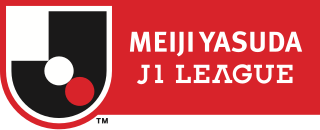
The J1 League, a.k.a “Meiji Yasuda J1 League” for sponsorship reasons, is the top level of the Japan Professional Football League system. Founded in 1992, it is one of the most successful leagues in Asian professional club football history. Contested by 20 clubs, it operates on a system of promotion and relegation with the J2 League. It was known as the J.League from 1993 to 1998 before becoming a two-division league, and as J.League Division 1 from 1999 to 2014.
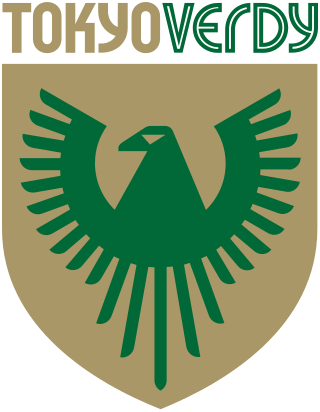
Tokyo Verdy is a Japanese professional football club based in Inagi, Tokyo. The club set for a return to J1 League for 2024 season, following promotion from J2 League in 2023.

Kawasaki Frontale is a Japanese professional football club based in Kawasaki, Kanagawa Prefecture, south of Tokyo. The club plays in the J1 League, which is the top tier of football in the country. Their home stadium is Kawasaki Todoroki Stadium, in Nakahara Ward, in the central area of Kawasaki.

Gamba Osaka is a Japanese professional football club based in Suita, Osaka Prefecture. The club plays in the J1 League, which is the top tier of football in the country. The club's home stadium is Panasonic Stadium Suita. They form a local rivalry with Osaka city-based Cerezo Osaka.
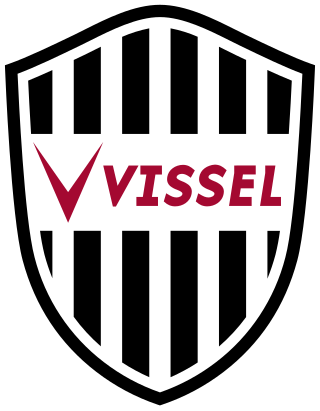
Vissel Kobe is a Japanese professional football club based in Kobe, Hyōgo Prefecture. The club plays in the J1 League, which is the top tier of football in the country. The team's home stadium is Noevir Stadium Kobe, in Hyōgo-ku, though some home matches are played at Kobe Universiade Memorial Stadium in Suma-ku.

Kashiwa Reysol is a Japanese professional football club based in Kashiwa, Chiba Prefecture, part of the Greater Tokyo Area. The club plays in the J1 League, which is the top tier of football in the country. Their home stadium is Sankyo Frontier Kashiwa Stadium, also known as "Hitachidai". Reysol is a portmanteau of the Spanish words Rey and Sol, meaning "Sun King". The name alludes to their parent company Hitachi, whose name means "rising sun" in Japanese. The club was formed in 1940 and was a founding member. of the Japan Soccer League (JSL) in 1965. Since the league's inception, they have spent nice in the top tier of Japanese football. They have been Japanese League champions twice in 1972 and 2011, and have won three League Cups in 1976, 1999 and 2013, and three Emperor's Cups in 1972, 1975 and 2012.

Kyoto Sanga FC (京都サンガF.C.) is a Japanese professional football club based in Kyoto. "Sanga" comes from the Sanskrit word sangha, a term meaning "group" or "club" and often used to denote the Buddhist priesthood, associating the club with Kyoto's many Buddhist temples. The club was formerly known as Kyoto Purple Sanga with "purple", the colour of the team uniforms, an imperial colour reflecting Kyoto's status as Japan's ancient imperial capital city. It was decided that, from 2007, the team will simply be known as "Kyoto Sanga". They are the oldest club competing in the J.League.
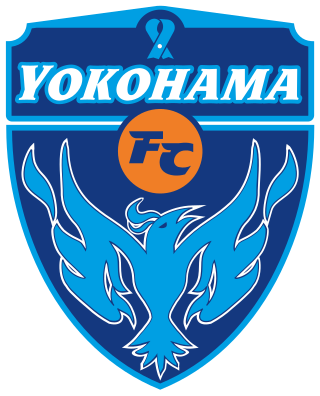
Yokohama Football Club is a Japanese professional football club based in Yokohama, Kanagawa Prefecture, part of the Greater Tokyo Area. The club was formed by fans of Yokohama Flügels as a protest against Flügels' merger with Yokohama Marinos in 1999, becoming the first supporter-owned professional sports team in Japan. They are set to play in the J2 League from 2024, the second tier of football in the country, after relegation from J1 League in 2023.

Ventforet Kofu is a Japanese professional football club from Kōfu in Yamanashi Prefecture. The team currently competes in the J2 League, Japanese second tier of professional football, hosting their home matches in the JIT Recycle Ink Stadium, located in Kōfu.

Giravanz Kitakyushu is a Japanese football club based in Kitakyushu, Fukuoka Prefecture. They currently play in J3 League, Japan's 3rd tier of professional league football.
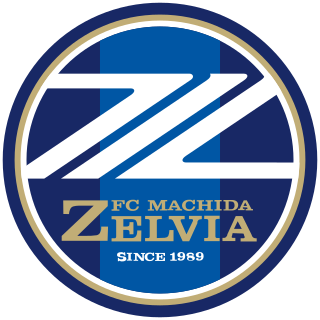
Football Club Machida Zelvia commonly known as FC Machida Zelvia is a Japanese football club based in Machida, Tokyo. The club set to make their debut in J1 League for the 2024 season following promotion in 2023 as the J2 League champions.
The 2009 J.League Division 1 season is the 45th season of the top-flight club football in Japan and the 17th season since the establishment of J1 League. The season started on March 7, 2009 and ended on December 5, 2009.
The 2010 J.League Division 1 season was the 46th season of the top-flight club football in Japan and the 18th season since the establishment of J1 League. The season began on March 6 and ended on December 4.
The 2010 J. League Division 2 season was the 39th season of the second-tier club football in Japan and the 12th season since the establishment of J2 League. The season began on March 6 and ended on December 4.
Japanese football in 2010
The 2003 J. League Division 2 season was the 32nd season of the second-tier club football in Japan and the 5th season since the establishment of J2 League.
The 2005 J.League Division 2 season was the 34th season of the second-tier club football in Japan and the 7th season since the establishment of J2 League.
The 2011 J.League Division 1 season was the 46th season of professional football in Japan, and the 19th since the establishment of the J.League. The season began on March 5 and concluded on December 3. The season was put on hold from March 12 to April 23 due to the aftermath of the 2011 Tōhoku earthquake and tsunami, therefore canceling a planned five-week summer break between June 27–July 29 in order to allow preparation of the Japan national team for the 2011 Copa América.
The 2011 J.League Division 2 season was the 40th season of the second-tier club football in Japan and the 13th season since the establishment of J2 League. The season began on March 5 and finished on December 3. Due to the aftermath of the 2011 Tōhoku earthquake and tsunami, the season was put on hold from March 12 to April 23.











